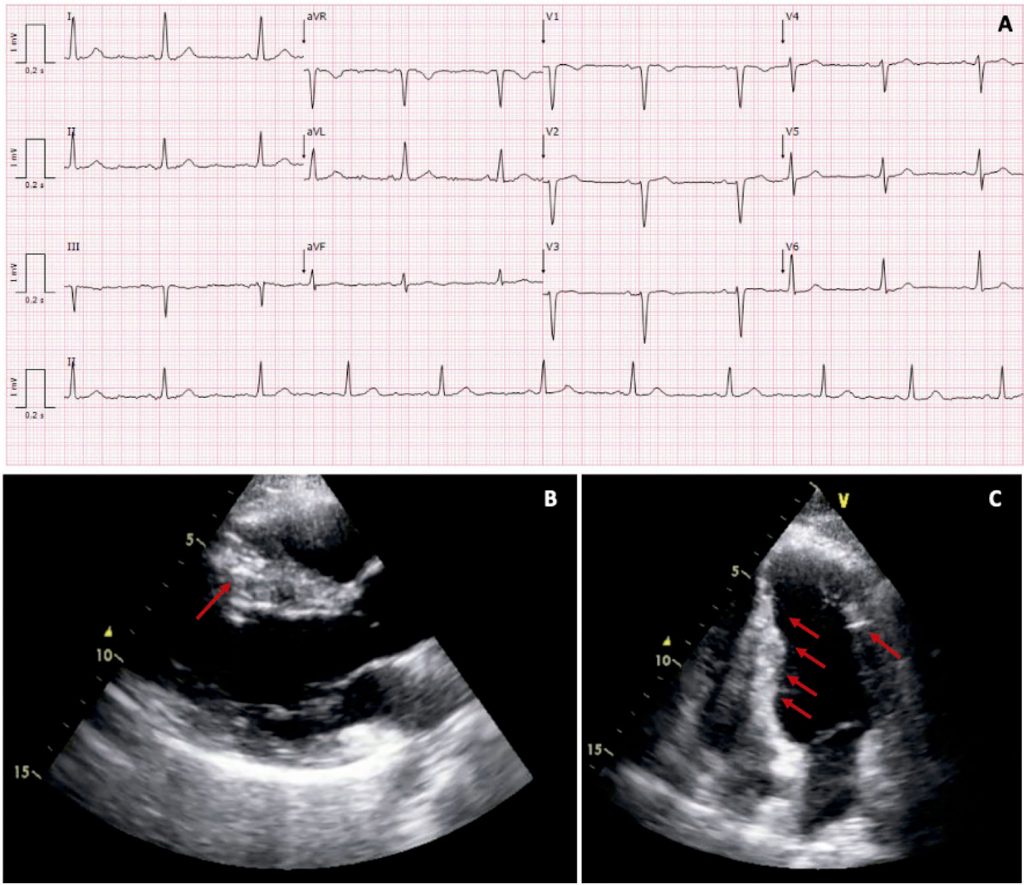Arq. Bras. Cardiol. 2023; 120(1): e20220147
Tuberous Sclerosis: Unusual Findings in the Setting of a Rare Disease
Case Description
A 40-year-old woman diagnosed with tuberous sclerosis (TS) at the age of one, with cognitive impairment, epilepsy and renal angiomyolipomas, was referred to Cardiology for complaints of fatigue. She had no known family history of TS. Although her mother could not confirm if a genetic test had been performed, the patient had a definite diagnosis of TS, according to International Tuberous Sclerosis Consensus Group revised criteria, due to the presence of several major criteria, as hypomelanotic macules, facial angiofibromas, cortical dysplasia and subependymal nodules.
On cardiovascular evaluation, she had no dyspnea on exertion, chest pain, palpitations or history of syncope. On physical examination, she had multiple cutaneous angiofibromas and hypomelanotic macules, cardiac auscultation with no murmurs or signs of congestion. Electrocardiogram (ECG) showed nonspecific repolarization abnormalities ( ) and no arrhythmic events were detected by the Holter method. Transthoracic echocardiography revealed the presence of multiple intracardiac hyperechogenic lesions, with no blood flow obstruction or valvular impairment, and preserved ventricular systolic function ( ). Cardiac magnetic resonance (CMR) showed the nature of the lesions ( ) – homogeneous high signal intensity in T1 and T2-weighted images (A, B, C), with uniform suppression with the application of fat-saturation pulses, with an intensity similar to adipose tissue (D). The lesions also showed chemical shift , revealing its lipomatous nature (F). No evidence of perfusion, late gadolinium enhancement (E) or other masses. The patient remained asymptomatic after five years of follow-up, performing an annual ECG and echocardiogram, with no increase in the number or size of lipomas.
[…]
1,487

